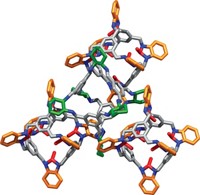Advertisement
Grab your lab coat. Let's get started
Welcome!
Welcome!
Create an account below to get 6 C&EN articles per month, receive newsletters and more - all free.
It seems this is your first time logging in online. Please enter the following information to continue.
As an ACS member you automatically get access to this site. All we need is few more details to create your reading experience.
Not you? Sign in with a different account.
Not you? Sign in with a different account.
ERROR 1
ERROR 1
ERROR 2
ERROR 2
ERROR 2
ERROR 2
ERROR 2
Password and Confirm password must match.
If you have an ACS member number, please enter it here so we can link this account to your membership. (optional)
ERROR 2
ACS values your privacy. By submitting your information, you are gaining access to C&EN and subscribing to our weekly newsletter. We use the information you provide to make your reading experience better, and we will never sell your data to third party members.
Materials
Phospholipids self-assemble into cuboid vesicles
Cubes could be developed for mechanically responsive drug delivery devices
by Celia Henry Arnaud
May 8, 2017
| A version of this story appeared in
Volume 95, Issue 19

When lipids self-assemble as vesicles, they typically form spheres because that shape minimizes surface tension. Only a few nonspherical systems have been made to date, and many of those systems require templates to scaffold the structure. Now, a team led by Andreas Zumbuehl of the University of Fribourg reports a 1,2-diamidophospholipid that self-assembles into cube-shaped vesicles without a scaffold (Angew. Chem. Int. Ed. 2017, DOI: 10.1002/anie.201701634). Hydrogen bonding between amide groups in the lipid leads to rigid membranes. Wide-angle X-ray scattering measurements suggest that the membrane packs in a herringbone pattern, the tightest bilayer packing known. Because of their stiffness, the membranes must be heated above their melting temperature, where they are in a fluid state, to form vesicles. When the vesicles are then cooled below their melting temperature, they adopt a cubic shape that maximizes flat surfaces and minimizes edges. The researchers want to use the cubes to help design drug delivery devices that respond to mechanical triggers. “The cubes themselves are probably too frail for this purpose because of their very long defect lines along the edges,” Zumbuehl says. “But they’ve taught us a lot about the physics needed for a next-generation mechano-responsive drug delivery container.”





Join the conversation
Contact the reporter
Submit a Letter to the Editor for publication
Engage with us on Twitter